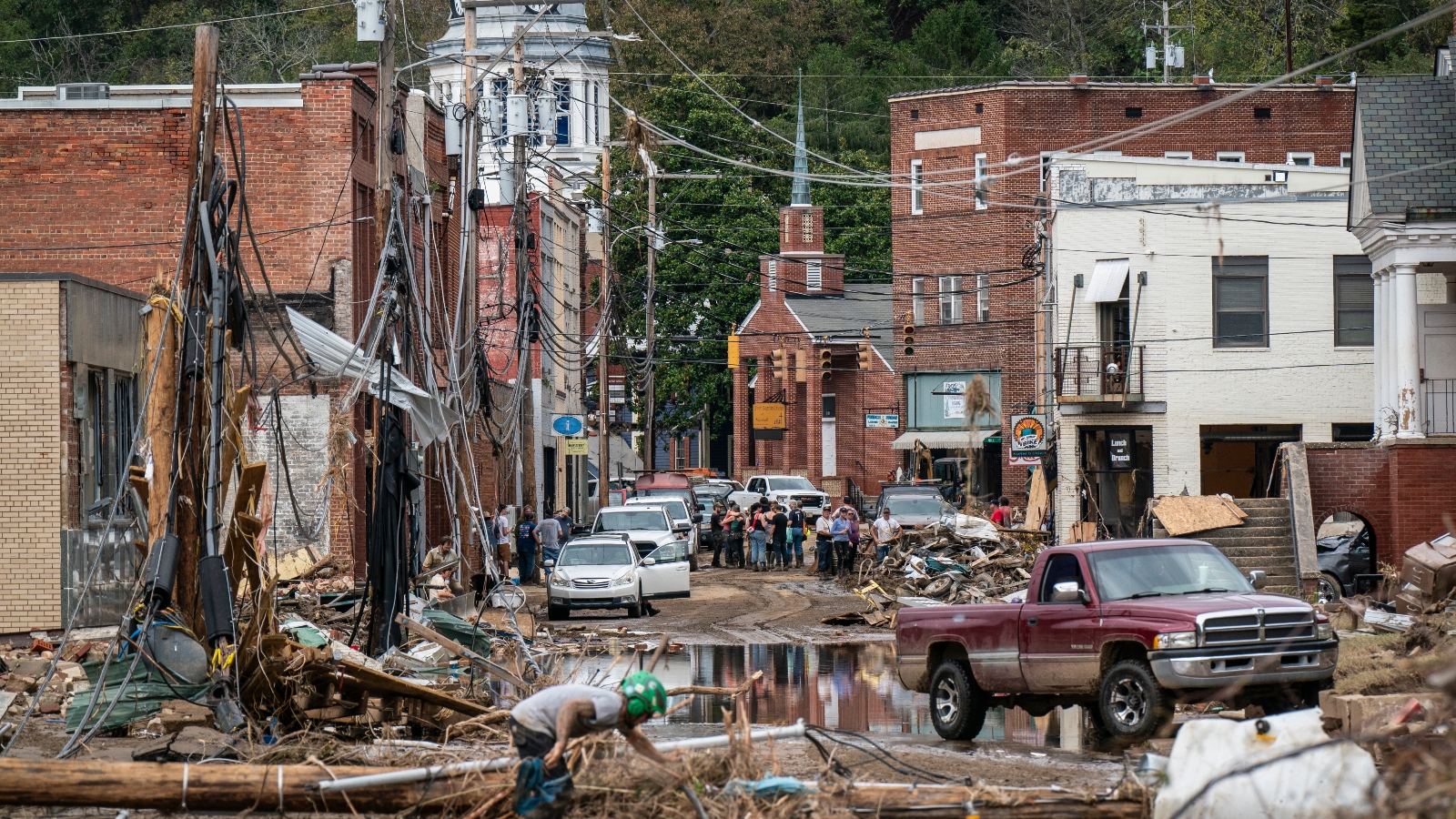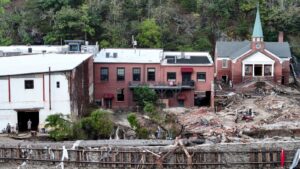
Even though the full extent of devastation in the mountainous regions of North Carolina and Tennessee is unknown, it is clear that Hurricane Helene is one of the deadliest and most destructive storms in recent US history. As of Friday, the storm has caused at least 180 deaths and destroyed or damaged thousands of homes and other buildings.
In a preliminary damage estimate released Thursday, private forecaster AccuWeather pegged the financial cost of Hurricane Helene’s damage at $225 billion to $250 billion, more than double what it estimated in the first days after the storm hit Florida last week. made landfall – and far more than recent major hurricanes such as 2012’s Sandy and 2017’s Harvey. That massive number includes the cost of rebuilding homes, businesses, roads and infrastructure in the storm’s path from Florida to Tennessee, as well as the wages and economic output lost during the years-long rebuilding.
Another fact that makes Helene’s devastation so unprecedented is that almost none of those hundreds of billions of dollars in losses will be paid out by insurance. While the storm caused most of its damage through flooding, which under s state-run flood insurance programvery few residents of the southern Appalachian Mountains maintain flood policies—even those who live in federally designated flood zones. As of now, these storm victims in North Carolina and Tennessee have no guarantee of comprehensive public or private assistance as they try to put their lives back together. The situation stands in stark contrast to other recent deadly storms such as Hurricane Ian in 2022, where wind damage was paid out by standard homeowners insurance and flooding was limited to low-lying coastal areas where residents typically carry state flood insurance.
“A whole lot of these [mountain] communities don’t have access to any of these things that can help you rebuild,” said Carolyn Kousky, a disaster insurance expert who is the vice president for economics and policy at the nonprofit Environmental Defense Fund. “It’s going to be really heartbreaking. It will take a very long time before they can rebuild.”
Helene is likely to cause about $6.4 billion in insured damages, according to disaster modeling firm Karen Clark & Company – a small number for a direct hit from a Category 4 hurricane where winds reached 140 miles per hour. That’s barely half the total insured damage from the 2018 California wildfires, and just 10 percent as much as the damage from Hurricane Ian.
Homeowner’s insurance premiums are rising almost everywhere in the United States as insurers deal with costly disasters, rising construction costs and new development in vulnerable areas. They will likely continue to rise in states like North Carolina, where the insurance commissioner just approved a double-digit premium rate increase.
But recent disasters like Ian and the California wildfires have also caused many insurers to go bankrupt or stop selling coverage in affected states. These market crashes have forced many homeowners to go without insurance or buy it from government-backed “insurers of last resort.” Despite Helene’s historic damage, states like North Carolina and Tennessee are unlikely to see a similar collapse in insurance availability.
“I’m not sure it’s going to have a big impact on the insurance market, because from an insurance industry perspective it’s not a very big loss,” says Karen Clark, the co-founder of Karen Clark & Company and one of the pioneers in catastrophe risk modeling.
It’s for the simple reason that most private companies stopped offering flood coverage about a century ago, after a series of devastating floods on the Mississippi River. The federal government then stepped in to protect America’s many waterfront homes from flood losses. As a result, insurance companies today pay out claims for wildfires in California and windstorms in the Midwest, but not for major rainfall events like Hurricane Helene.
The federal National Flood Insurance Program is supposed to serve as a public substitute for lost private coverage, but it is not working. The 5 million homes in the program tend to be very vulnerable to flooding, which has led to repeated loss events and driven the program billions of dollars in debt. The Federal Emergency Management Agency, or FEMA, has been trying for decades to enroll more people in the program, including those who live far from the coast, but even its subsidized rates are out of reach for many homeowners. As a result, participation remains limited: in Asheville, the hardest-hit major city in North Carolina, less than 1 percent of residents have flood insurance.
Even given the large coverage gaps, Helene is still likely to trigger one of the largest FEMA flood insurance payouts in recent years, perhaps worth billions of dollars. But Swiss Re, the massive global reinsurance company acting as a backstop for the national program, has confirmed that most people who suffered damage during Helene will get nothing at all.
“Unfortunately, much of the damage from these devastating floods will not be covered by insurance,” says Monica Ningen, who leads the company’s real estate business in the United States. She added that the lack of coverage “will make the task of reaching the affected communities all the more difficult.”
Without insurance, which is often the first line of defense against disaster damage, most homeowners who have seen flood damage will be on their own as they rebuild. Some victims will receive several thousand dollars from FEMA for recovery costs, and some others will be able to secure low-interest rebuilding loans from the Small Business Administration. The Department of Housing and Urban Development also has a record of spending billions of dollars on long-term recovery needs after major disasters, paying for home repairs and new housing development.
But this aid money could take months or years to reach hard-hit areas, Kousky said, and it won’t come close to the cost of rebuilding for most people, especially those in low-income households.
“These programs are intentionally designed not to replace insurance,” Kousky said. “It’s really limited.”
Despite the massive amount of media attention Hurricane Helene generated, and the historic scale of the uninsured losses, Kousky said she is pessimistic that the storm will change much of U.S. disaster policy, either by encouraging more people to buy flood insurance for sale or to raise disaster relief. victims.
“There have been so many events, they get attention and seem like wake-up calls, and our response has been inadequate every time,” she said.
Editor’s note: The Environmental Defense Fund is an advertiser with Grist. Advertisers play no role in Grist’s editorial decisions.





